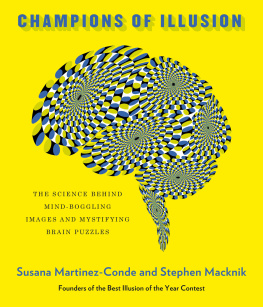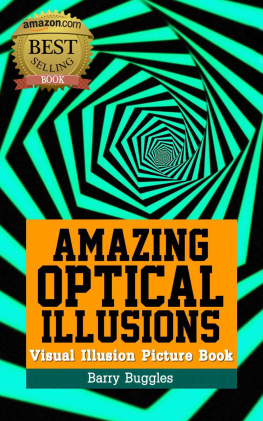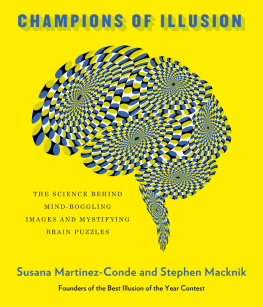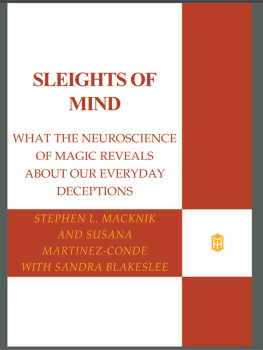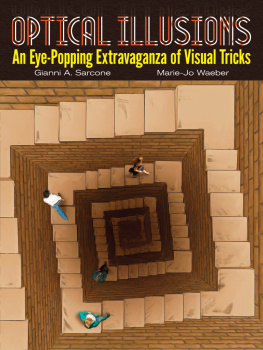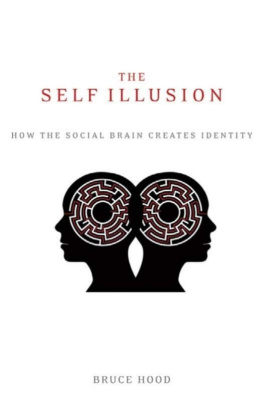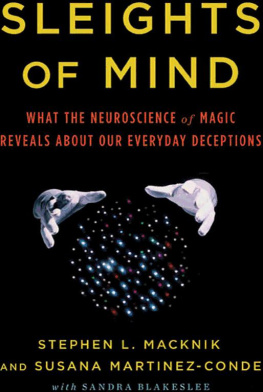Contents
Guide
In this beautiful book, Susana Martinez-Conde and Stephen Macknik compile some of the most surprising, compelling, and elegant visual illusions of the new millennium and explain how and why they work. Youll be amazed.
Daniel Simons, professor of psychology at the University of Illinois and bestselling coauthor of The Invisible Gorilla
Visual illusions flummox us. They mystify, confuse, baffle, bewilder, perplex, stump, and confound. They do so because they contain in them our evolutionary tracks and the way we view our physical world today. This collection by Susana Martinez-Conde and Stephen Macknik represents the best of a yearly competition to discover the most impressive visual illusions that the best minds among us can create. In giving us this compendium, Martinez-Conde and Macknik bring us face-to-face with our evolutionary history and our aspirations for who we might be. A feast for your eyes!
Mahzarin R. Banaji, Richard Clarke Cabot Professor of Social Ethics at Harvard University and coauthor of Blindspot
Illusions are a window into how the brain generates our perceptions. Nowhere is this better illustrated and explained than in Champions of Illusion. Highly recommended!
Earl Miller, Picower Professor of Neuroscience at the Massachusetts Institute of Technology
Visual illusions are perpetually entertaining, but they are not merely amusing curiosities; they have profound implications for understanding the mechanisms underlying normal human vision. Our perception of the world, despite its appearance of coherence, stability, and authenticity, is in fact evanescent and transitory, and Susana Martinez-Conde and Stephen Mackniktwo leaders in the fielduse cleverly contrived illusions to make the point.
V. S. Ramachandran, Director of the Center for Brain and Cognition at the University of California, San Diego, and bestselling author of Phantoms in the Brain and coauthor of The Tell-Tale Brain
ALSO BY SUSANA MARTINEZ-CONDE AND STEPHEN MACKNIK
Sleights of Mind: What the Neuroscience of Magic Reveals About Our Everyday Deceptions
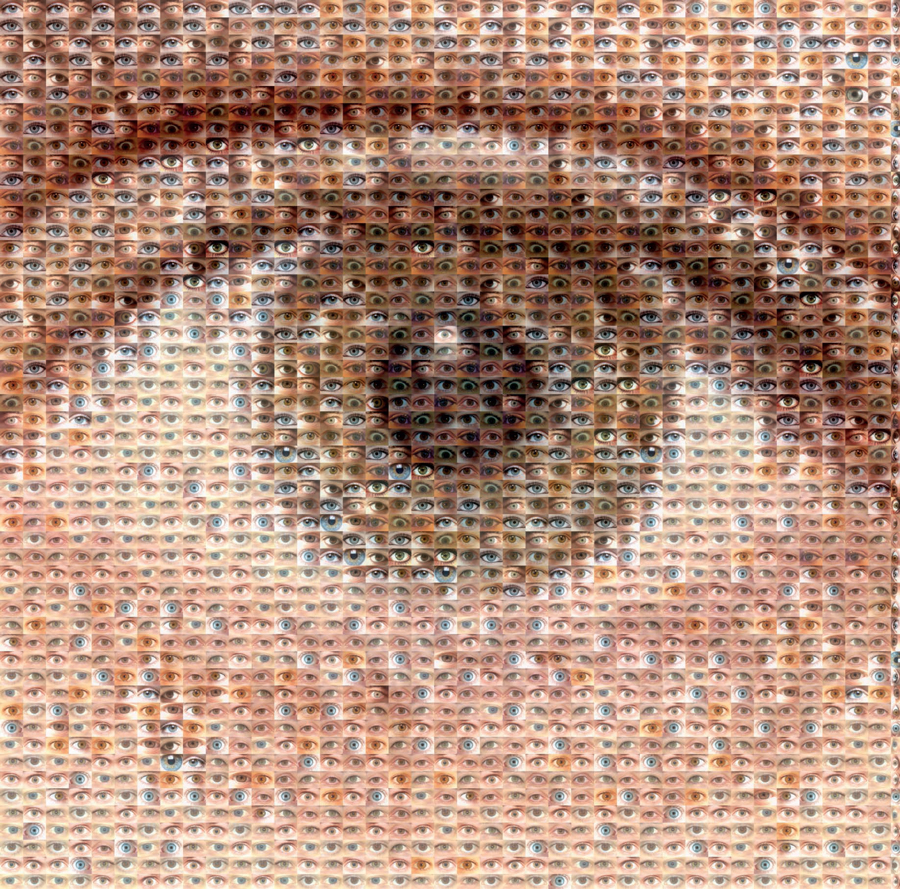
CHAMPIONS OF ILLUSION
THE SCIENCE BEHIND MIND-BOGGLING IMAGES AND MYSTIFYING BRAIN PUZZLES
SUSANA MARTINEZ-CONDE AND STEPHEN MACKNIK

SCIENTIFIC AMERICAN / FARRAR, STRAUS AND GIROUX NEW YORK
The author and publisher have provided this e-book to you for your personal use only. You may not make this e-book publicly available in any way. Copyright infringement is against the law. If you believe the copy of this e-book you are reading infringes on the authors copyright, please notify the publisher at: http://us.macmillanusa.com/piracy.
TO THE THREE JOSEFINAS: NOVA, FELUCHA, AND CUQUITA

A re-creation of The Dress shows the effect of ambiguous illumination on the garment.
Do you remember experiencing that incredible Internet sensation The Dress for the first time? The two of us learned about the phenomenon when a science reporter sent us an e-mail asking for our comments. When we opened the image file attached to the reporters e-mail, both of us saw a white-and-gold dress and were puzzled to learn that many people claimed to see the same dress in blue and black. Huh? A quick Google search revealed that the mystery had a global scale: roughly half of humanity saw the dress as blue and black, and the other half as white and gold. A-list personalities like Taylor Swift and Kim Kardashian were arguing over it on Twitter! Our children told us that they saw blue and black on the same screen where we saw white and gold, while all of us viewed the dress at the same time. Incredible! It took weeks for the story to developand for some fast-moving research labs to do scientific testingbefore we knew what had occurred. The Dress was a new class of perceptual effect, never before described. It is now considered to be the first illusion of color ambiguity, which causes different peopleall with normal color visionto see the same object as having completely different hues. As for what it means for the brain, the research is still ongoing. But one of the most important take-home messages presented by The Dress is that your perception is a very personal and subjective experience. There is nothing objective about it.
Your brain creates a simulation of the world that may or may not match the real thing. The reality you experience is the result of your exclusive interaction with that simulation. We define illusions as the phenomena in which your perception differs from physical reality in a way that is readily evident. You may see something that is not there, or fail to see something that is there, or see something in a way that does not reflect its physical properties.
Just as a painter creates the illusion of depth on a flat canvas, our brain creates the illusion of depth based on information arriving from our essentially two-dimensional retinas. Illusions show us that depth, color, brightness, and shape are not absolute terms but are subjective, relative experiences created actively by our brains circuits. This is true not only of visual experiences but of any and all sensory perceptions, and even of how we ponder our emotions, thoughts, and memories. Whether we are experiencing the feeling of redness, the appearance of squareness, or emotions such as love and hate, these are the result of the activity of neurons in our brain.
Think of The Matrix, a movie about a future world in which humanity has lost the war against the machines. The robot victors keep humans subjugated by immersing themwithout their knowledgein a virtual reality simulation called the Matrix. In an iconic scene, Morpheusone of the leaders of the human resistancetries to recruit the reluctant hero Neo to the cause, but first needs to convince him that his whole life experience to date has been an illusion devised by their machine overlords. What is real? How do you define real? asks Morpheus. If youre talking about what you can feel, what you can smell, what you can taste and see, then real is simply electrical signals interpreted by your brain. Morpheus then produces two pillsone red, one blueand asks Neo to choose between them. The red pill will wake Neo up from the Matrix and release him into the real world. The blue pill will make Neo forget that he ever met Morpheus: he will remain in the Matrix, perpetually unaware that his complete experience isand has always beennothing more than a sophisticated dream. Neo takes the red pill, of course, and his adventures start. What the movie doesnt tell us is that even when Neo awakens from the fake world of the Matrix into the real world, his brain continues to construct his subjective experience, as all our brains do. In other words, Neo remains stuck in the biological Matrix of his own mind.
Yes, there is a real world out there, and you perceive events that occur around you, however incorrectly or incompletely. But you have never actually lived in the real world, in the sense that your experience never matches physical reality perfectly. Your brain instead gathers pieces of data from your sensory systemssome of which are quite imprecise or, frankly, wrong. Accuracy is not the brains forte, and so, like Neo, we all live inside our own heads, in an illusory Matrix.

